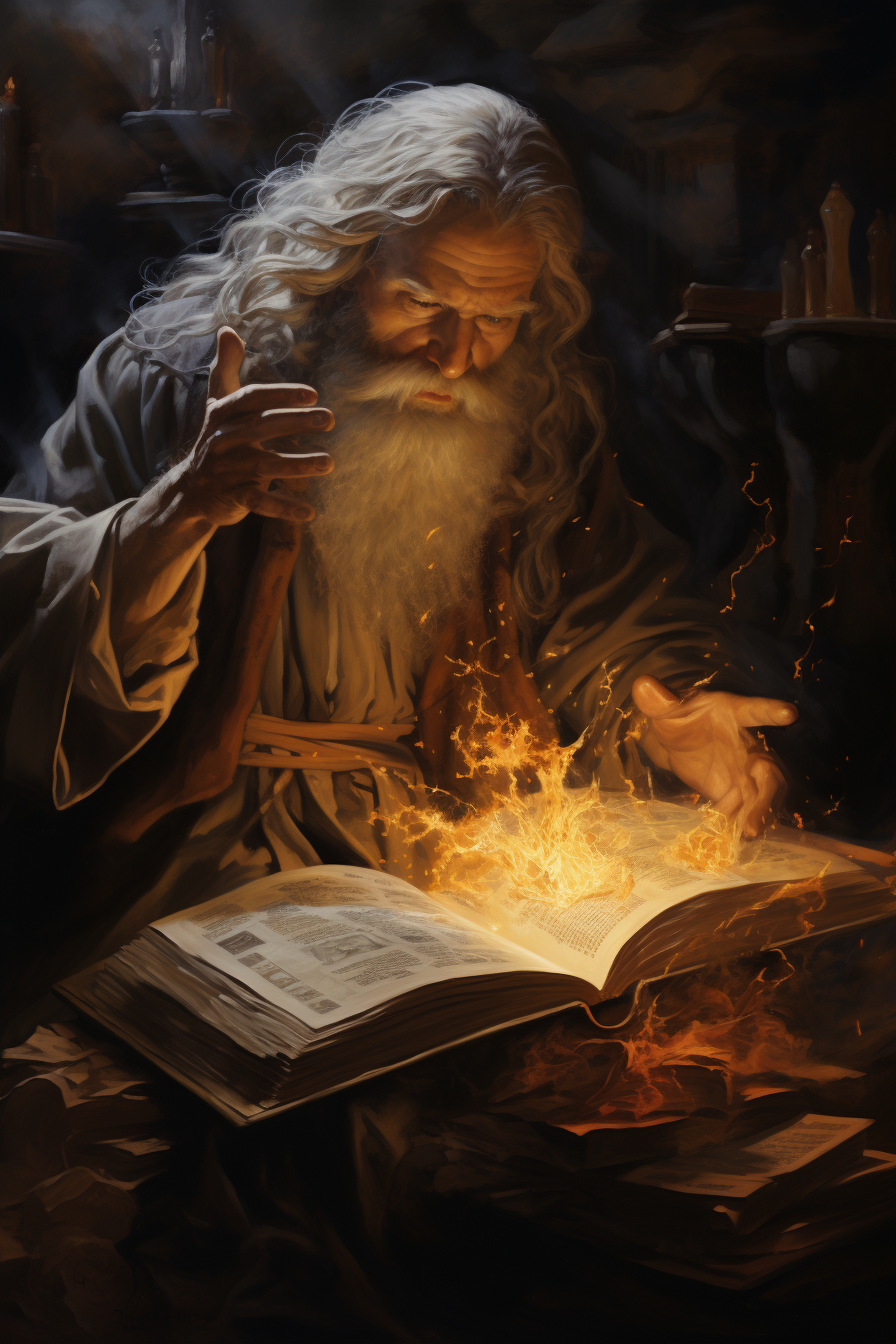Hidden Occult and Qabalistic Meanings in the Old Testament
The Old Testament, or the Hebrew Bible, stands as a revered text that has shaped the religious beliefs and practices of millions around the world. Its profound stories and teachings have captivated both scholars and enthusiasts alike, leading to speculation about hidden occult and Qabalistic meanings encrypted within its verses. In this article, we embark on an exploration of the enigmatic realm, shedding light on interpretations and symbolic nuances associated with the Old Testament.
The Occult and Qabalah:
Before delving into the hidden meanings within the Old Testament, it is crucial to grasp the concepts of the occult and Qabalah. The occult encompasses esoteric knowledge and practices that delve beyond ordinary human understanding, including mysticism and divination. Qabalah, rooted in Judaism, is a mystical and philosophical tradition that employs symbolic systems and the study of sacred texts to gain insights into the divine nature of the universe and the human soul.
Hidden Symbolism and Interpretations:
Numerology and Gematria: Numerology and gematria involve assigning numerical values to letters or words, believing that these values hold symbolic meanings. In the Old Testament, certain words and phrases acquire numerical values that reveal hidden connections. For example, the Hebrew word for “life” (Chai) has a numerical value of 18, which is considered auspicious in Jewish tradition. This numerical link emphasizes the value and sanctity of life within the biblical narrative.

Names and Divine Attributes:
Names in the Old Testament hold significant weight, often reflecting the qualities and attributes of the individuals or entities they represent. By examining the meanings and symbolism behind these names, deeper insights can be gleaned. For instance, the name Yahweh, the Hebrew name for God, is often associated with the divine qualities of existence, eternity, and self-sufficiency. This name embodies the transcendent and timeless nature of the divine.
Symbolic Imagery:
The Old Testament is replete with rich symbolism that can be interpreted through occult and Qabalistic lenses. The Tree of Life, a central symbol in Qabalah, is believed to represent the interconnectedness of the divine and human realms. It signifies the harmonious flow of divine energy throughout creation, guiding seekers towards spiritual enlightenment and self-realization. Similarly, the serpent in the Garden of Eden is often seen as a symbol of wisdom, spiritual transformation, and the duality of good and evil. It represents the profound lessons of choice, knowledge, and the delicate balance between light and darkness.
Hidden Codes and Ciphers:
Certain enthusiasts propose that the Old Testament conceals hidden codes and ciphers, harboring prophetic or mystical messages. The most renowned example is the Torah codes or Bible codes, where specific sequences of letters are believed to reveal future events or hidden truths. Proponents argue that these codes provide evidence of divine authorship or foreknowledge within the sacred text. However, skeptics question the statistical validity and interpretational biases associated with these codes, leading to ongoing debates among scholars.
Archetypal Themes and Universal Lessons:
Beyond the intricate details and specific interpretations, the Old Testament carries archetypal themes and universal lessons that resonate across cultures and time. The narratives of redemption, sacrifice, and the search for meaning echo throughout the text, offering profound insights into the human condition and the pursuit of spiritual truth. These overarching themes provide a foundation for diverse interpretations, whether through the lens of the occult, Qabalah, or mainstream religious perspectives.
Examples of hidden symbolism and interpretations in the Old Testament:
- The Tabernacle: The Tabernacle, described in detail in the book of Exodus, is a portable sanctuary that served as a place of worship for the Israelites during their journey in the wilderness. Its intricate design and construction hold deeper symbolic meanings. For instance, the three sections of the Tabernacle—the Outer Court, the Holy Place, and the Holy of Holies—represent different levels of spiritual attainment and divine presence.
- The Ark of the Covenant: The Ark of the Covenant was a sacred chest that housed the tablets of the Ten Commandments. It is believed to have possessed extraordinary power and represented the divine presence. The Ark, adorned with cherubim, represents the union of earthly and heavenly realms and symbolizes the dwelling place of God among His people. Never look at it directly.
- Ritual Sacrifices: The practice of animal sacrifices in the Old Testament carries symbolic significance beyond the act itself. The concept of sacrifice represents surrendering something of value to establish a deeper connection with the divine. It embodies the idea of atonement, purification, and the need for redemption.
- The Book of Psalms: The Book of Psalms contains a collection of poetic and devotional songs attributed to King David and other authors. Many of the psalms are rich in symbolism and can be interpreted from an occult or Qabalistic perspective. For example, Psalm 23, known as the Shepherd’s Psalm, can be seen as an allegory for the soul’s journey towards spiritual fulfillment, guided by the divine Shepherd.
- Prophecies and Messianic Figures: Various prophecies in the Old Testament are believed to foreshadow the coming of a Messiah or a divine savior. These prophecies, often veiled in poetic language, have given rise to numerous interpretations and speculations. Some occult and Qabalistic interpretations seek to uncover hidden messianic themes and trace their connections to later religious traditions.
- Numbers and Symbolic Patterns: Numbers play a significant role in the Old Testament, often conveying symbolic meanings. For instance, the number seven is associated with completeness or perfection, as seen in the seven days of creation or the seven-branched menorah in the Tabernacle. The number 40 frequently appears, representing a period of testing, transition, or spiritual transformation.
- The Song of Songs: The Song of Songs, also known as the Song of Solomon, is a poetic love song traditionally attributed to King Solomon. Beyond its surface interpretation as an expression of romantic love, the Song of Songs is often explored as an allegory for the mystical union between the divine and the human soul.
These examples merely scratch the surface of the hidden occult and Qabalistic meanings that can be found within the Old Testament. They demonstrate the depth and complexity of the text, providing fertile ground for exploration, interpretation, and personal spiritual reflection. By delving into these hidden layers, one can gain a deeper appreciation for the profound wisdom and symbolism embedded within this ancient scripture.
Conclusion:
The Old Testament serves as a repository of religious wisdom and historical narratives, while also captivating the imagination of those drawn to hidden meanings and mystical interpretations. Exploring the occult and Qabalistic aspects of the Old Testament can provide a deeper appreciation of its symbolic language and spiritual depth. While these interpretations are not universally accepted or endorsed by mainstream religious scholars, they offer alternative perspectives that continue to fascinate and inspire individuals on their spiritual journeys. Whether one chooses to view the Old Testament through a traditional lens or explore its hidden dimensions, it remains a testament to the enduring power and mystery of sacred texts.







